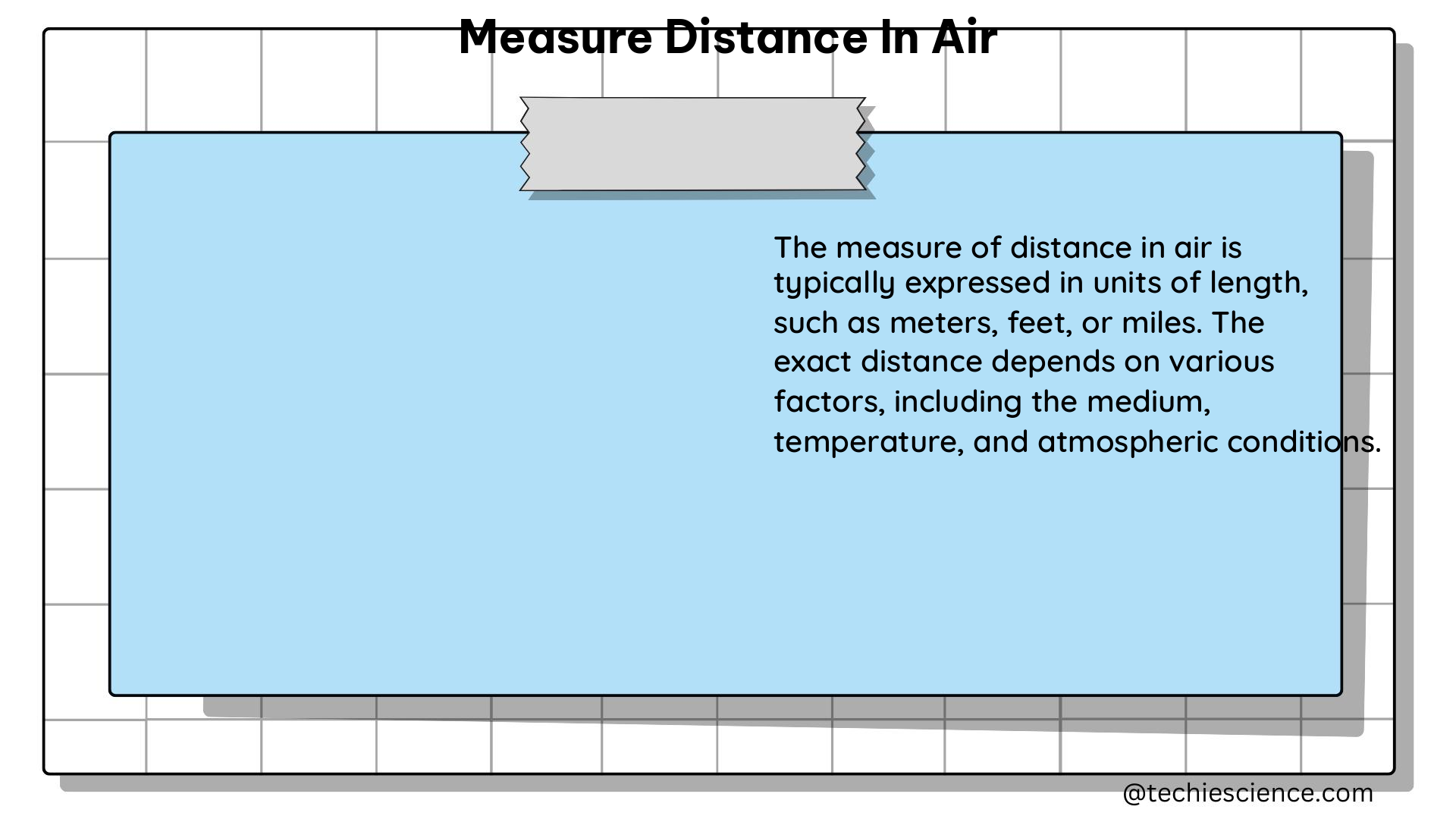Measuring distance in air is a fundamental aspect of various scientific and technological fields, including physics, engineering, and robotics. This comprehensive guide delves into the two primary methods used for this purpose: triangulation and time-of-flight (TOF) techniques, providing a detailed overview of their theoretical foundations, technical specifications, and real-world applications.
Triangulation: Leveraging Spatial Relationships
Triangulation is a geometrical method that relies on the spatial relationship between the source of light, the target, and the detector. It is based on the principle that the angle of incidence and the angle of reflection are equal concerning the normal to the target surface. Triangulation can be further divided into passive and active techniques.
Passive Triangulation
Passive triangulation involves using natural light or existing light sources to measure the distance. It is often used in applications like photogrammetry and remote sensing. The basic principle of passive triangulation is as follows:
- Principle: The target is illuminated by natural or existing light sources, and the angles of the reflected light are measured by two or more detectors (e.g., cameras) placed at known positions.
- Geometry: Using the known positions of the detectors and the measured angles, the distance to the target can be calculated using trigonometric relationships.
- Advantages: Passive triangulation is a cost-effective and non-invasive method, as it does not require an artificial light source.
- Limitations: Passive triangulation has limitations, such as requiring a clear line of sight and being sensitive to changes in lighting conditions.
Active Triangulation
Active triangulation employs an artificial light source, such as a laser, to illuminate the target. This method is commonly used in laser rangefinders and 3D scanners. The key aspects of active triangulation are:
- Principle: An artificial light source, typically a laser, is used to illuminate the target, and the reflected light is detected by a sensor (e.g., a camera) placed at a known position.
- Geometry: The distance to the target is calculated using the known positions of the light source and the sensor, as well as the measured angle of the reflected light.
- Advantages: Active triangulation offers higher precision and accuracy than passive triangulation, as it can control the characteristics of the light source.
- Limitations: Active triangulation may be limited by the range and power of the light source, as well as the sensitivity of the detector.
Time-of-Flight (TOF) Techniques: Measuring Signal Travel Time

TOF techniques measure the time it takes for a signal, often light or sound, to travel to a target and return to the sensor. The distance is then calculated using the speed of the signal and the time of flight. TOF methods can be divided into direct and indirect techniques.
Direct TOF
Direct TOF measures the time it takes for a light pulse to travel to the target and back directly. This method is commonly used in LIDAR (Light Detection and Ranging) systems and provides high-resolution, 3D point clouds of objects and environments. The key aspects of direct TOF are:
- Principle: A light pulse is emitted, and the time it takes for the pulse to travel to the target and back is measured.
- Distance Calculation: The distance is calculated using the formula: distance = (speed of light × time of flight) / 2.
- Advantages: Direct TOF provides high-resolution, 3D data and can operate over long distances.
- Limitations: Direct TOF may be limited by the range and power of the light source and the sensitivity of the detector.
Indirect TOF
Indirect TOF methods, such as phase comparison and frequency modulation, measure the phase shift or frequency change of a modulated light signal. These methods offer longer range and higher accuracy than direct TOF but may require more complex signal processing and calibration. The key aspects of indirect TOF are:
- Principle: The light source is modulated, and the phase shift or frequency change of the reflected signal is measured.
- Distance Calculation: The distance is calculated based on the measured phase shift or frequency change, using appropriate mathematical models.
- Advantages: Indirect TOF methods can achieve longer range and higher accuracy than direct TOF.
- Limitations: Indirect TOF requires more complex signal processing and calibration compared to direct TOF.
Technical Specifications and Considerations
When selecting a method for measuring distance in air, it is essential to consider the following technical specifications and factors:
- Measurement Range: The maximum and minimum distances that can be accurately measured.
- Accuracy and Precision: The degree of closeness of the measured value to the true value and the repeatability of the measurements.
- Resolution: The smallest detectable change in distance.
- Sampling Rate: The frequency at which distance measurements are taken.
- Environmental Factors: The influence of factors such as temperature, humidity, and atmospheric conditions on the measurement accuracy.
- Power Consumption: The energy requirements of the measurement system.
- Size and Weight: The physical dimensions and weight of the measurement system.
- Cost: The financial investment required for the measurement system and its maintenance.
Applications and Real-World Examples
Measuring distance in air has a wide range of applications in various fields, including:
- Robotics and Automation: Distance measurement is crucial for object detection, collision avoidance, and navigation in autonomous systems.
- Surveying and Mapping: Triangulation and TOF techniques are used in surveying, photogrammetry, and remote sensing applications.
- Automotive and Transportation: Distance measurement is essential for features like adaptive cruise control, parking assistance, and collision warning systems.
- Industrial Automation: Distance measurement is used for process control, quality assurance, and dimensional inspection in manufacturing.
- Aerospace and Defense: Accurate distance measurement is critical for applications like missile guidance, air traffic control, and satellite tracking.
- Healthcare and Biomedical: Distance measurement is used in medical imaging, prosthetics, and rehabilitation technologies.
Conclusion
Measuring distance in air is a critical aspect of various scientific and technological fields. Triangulation and TOF techniques are the two primary methods used for this purpose, each with its unique principles, advantages, and limitations. By understanding the technical specifications and considerations, as well as the real-world applications of these methods, researchers, engineers, and technicians can make informed decisions when selecting the appropriate distance measurement solution for their specific needs.
References
- How Sensors Convert the Environment into Useful Data – FBK Magazine
- Measuring Distance with Light | Hamamatsu Photonics
- What Are SMART Goals? Definition & Best Practices | Tableau
- Various Objects and their Measurable Distance – ResearchGate
- Measuring Progress – Second Nature
- Laser Rangefinder Basics: How They Work and Applications – Laser Focus World
- Principles of LIDAR – NOAA
- Triangulation Measurement Principle – Keyence
- Time-of-Flight Camera Technology – Texas Instruments

I am Alpa Rajai, Completed my Masters in science with specialization in Physics. I am very enthusiastic about Writing about my understanding towards Advanced science. I assure that my words and methods will help readers to understand their doubts and clear what they are looking for. Apart from Physics, I am a trained Kathak Dancer and also I write my feeling in the form of poetry sometimes. I keep on updating myself in Physics and whatever I understand I simplify the same and keep it straight to the point so that it deliver clearly to the readers.